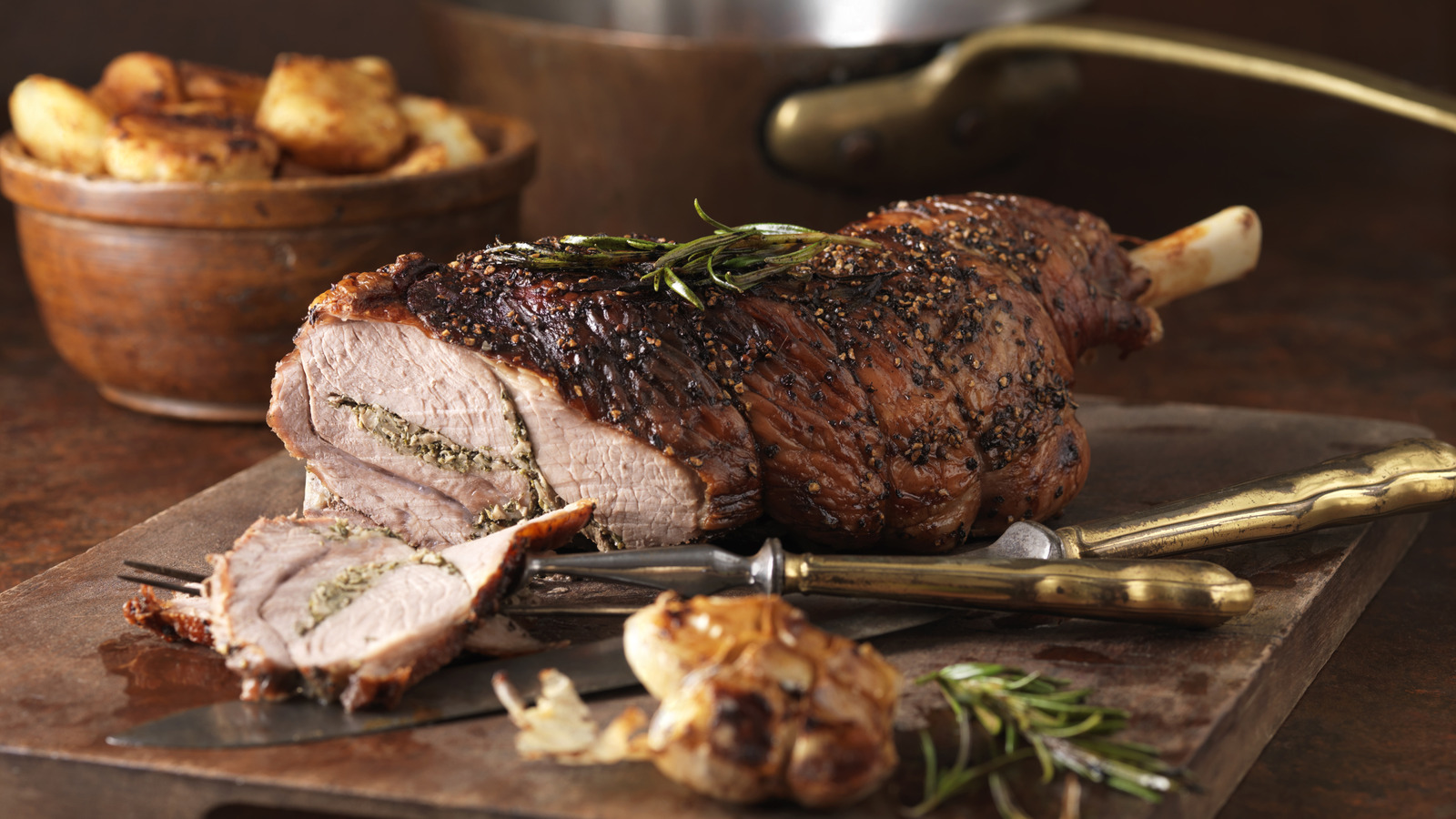
If you're looking to start cooking more lamb at home, it's important to learn more about the meat since it isn't quite as common as others. There are some common myths about lamb that you need to stop believing, so that you're able to make the best lamb dishes possible. To debunk these myths, Daily Meal spoke to two experts: Kareem El-Ghayesh, a James Beard-nominated chef from Austin's KG BBQ , who is also an Ambassador for the American Lamb Board, and Megan Wortman, who is the executive director of the American Lamb Board .
The first myth is that beef is more popular than lamb because it tastes better. El-Ghayesh explains that industry trends drive popularity, noting, "If a trend comes up and it's all about barbecuing lamb now, you're going to see a major change. The fast food [industry] is just dominated with beef.

So the demand on beef and chicken is just way [higher]." However, he's noticed that people are getting more experimental, wanting to branch out into unfamiliar territory, which is where lamb comes in. He continues, "You would be surprised by how many people walk up to the window and they say, 'I've never had lamb.
' And I'm like, 'All right, I got you.'" But the misguided belief that beef inherently tastes better than lamb isn't the only myth out there. From the myths that all lamb tastes gamey and is unhealthy to misconceptions about factory farming, cuts of lamb, and making stock from the bones, let's debunk more lamb myths that may have been getting in the way of trying this delicious meat at home.
Myth: Lamb is unhealthy One reason someone might be avoiding lamb is that they think it's too unhealthy. Of course, you shouldn't be overdoing it on the red meat because it does come with health risks — for example, it increases your risk of cardiovascular disease and even your risk of cancer. But that doesn't mean you have to cut lamb out of your diet entirely — and it even has some health benefits.
Megan Wortman says, "We all need to reduce red meat consumption, but there's a really great nutrition profile of the lamb in terms of being nutrient-rich. And people are looking for lean proteins, a lot of our cuts are lean, so there's a great nutrition to it." According to Kareem El-Ghayesh, these nutrients include vitamin B-12, zinc, and iron.
As for how much red meat is too much, its recommended to limit your intake to about three portions per week. That gives you plenty of room to experiment with a lamb dish or two, while still having room for one of your go-to home-cooked beef dishes. Myth: Lamb always tastes gamey You may have heard the term "gamey" associated with lamb, but may have little idea what that means or if it's actually true.
Essentially, when we call meat gamey it means it has a stronger, more "wild" flavor than how a farmed animal tastes. If an animal comes straight from the wild, it may be more active and, thus, have less fat, which affects the flavor of the meat. For lamb, specifically, it depends on how the lambs were raised.
American lambs are often grass-fed, then fed grain toward the end of their life. Megan Wortman says, "The grain actually will give it a little bit of a richer, fattier butter beef-like flavor. It reduces the gaminess.
" However, if you want a stronger lamb flavor, you'll want to look out for lamb that has only been grass-fed, and how a lamb is fed depends partly on the region it's coming from. Wortman continues, "Australia's now doing a lot of grain finishing because the U.S.
is their largest market and they're catering to the U.S. consumer.
But New Zealand is a much smaller carcass. It's all strictly grass-fed so you're going to get a really, really strong lamb flavor." Myth: All lamb is factory farmed According to Kareem El-Ghayesh and Megan Wortman, there are a lot of misconceptions about the lamb industry as a whole.
For example, it's more sustainable than you may think. El-Ghayesh explains, "Sheep are also much more sustainable [than other types of meat]. It doesn't require as much attention.
It doesn't require as much water, so it's a lot more [environmentally] friendly to raise sheep and to consume sheep." You can learn more about what this means on a larger scale by reading our guide to what exactly sustainable food is . Beyond the sustainability aspect, not all lambs come from factory farming.
Wortman explains that the lamb industry is considered small compared to other meat industries, and that most lamb comes from family-owned farms. Wortman continues, "More than 60% of the lamb consumed in the U.S.
is imported now. So the industry is not growing. There's 80,000 sheep producers across the entire U.
S., but that speaks to how small, we're just producing a very small amount of meat. There's more lamb producers than pork producers, but [they operate] on a much, much smaller scale.
" Myth: A tenderloin is a common cut of lamb As it turns out, a lamb tenderloin is completely different from a beef or pork tenderloin. When asking for a beef or pork tenderloin, the customer will receive a substantial cut of meat that they can use for a number of recipes. Thus, one might assume that a lamb tenderloin is similar — but that's not the case.
Megan Wortman explains, "A lot of people ask for it all the time, but [the lamb] loin is smaller than what you think of a tenderloin. So the tenderloin doesn't make sense to take out. It's tiny so it's usually attached [to] the T-bone.
" She adds that, if you went to the butcher looking to get lamb tenderloin, you would likely have to buy a minimum of 10 of them (since they're so small) and that it may cost something like $45 a pound. Kareem El-Ghayesh adds, "The loin and the tenderloin come from the lower back, which is a cut that's called the saddle. So basically the most common cut you get from this section is the lamb T-bone, which I like to call the world's cutest steak because it's a very small T-bone.
" El-Ghayesh says to treat the lamb T-bone like a steak by grilling or pan searing it to your preferred temperature. In the vein of treating a lamb T-bone just like a steak, you can read our guide to steak doneness temperature to better understand how you should go about cooking it to achieve your preferred doneness. Myth: You can reuse bones after making a lamb roast You may think that, after you've made a lamb roast, you can reuse those leftover bones for other purposes, such as making a stock — unfortunately, this is a myth.
It pays to know how to make stock at home – for when you're in the mood for a good soup or stew — but you're going to have to plan ahead for it. Kareem El-Ghayesh says, "If you want to do stock, you should always go with raw. You can roast the bones first quickly just to get color, but if you fully cook a roast, most of the flavor in that bone is already gone.
" However, those bones aren't completely useless — as long as you have a furry friend around the house. El-Ghayesh recommends using those leftover bones as dog treats — not quite as exciting as getting a delicious lamb broth out of it, but at least the bones will make your pet happy..















